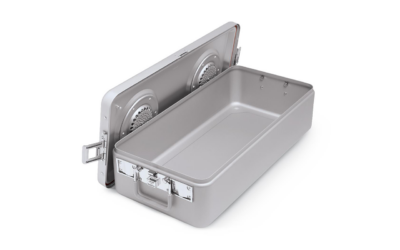Perioperative hypothermia puts patients at risk for surgical site infections, which can lead to complications, cause lon- ger hospital stays and increase patients’ risk for mortality. Because anesthetized patients cannot regulate their own body temperature, all surgical patients who have undergone anesthesia are at risk for hypothermia-related complications.
According to the Centers for Medicare and Medicaid Services (CMS), patients who develop a surgical site infection are 60 percent more likely to spend time in the intensive care unit, five times more likely to be readmitted to the hospital and are at twice the risk of mortality than patients who do not develop surgical site infections. More than half of all surgical patients experience inadvertent hypothermia, according to a study published in the AANA Journal.
A growing body of evidence that links normothermia—keeping the patient’s body temperature at a normal range during surgery—to healthier patient outcomes has led the Surgical Care Improvement Project (SCIP) to amend its guide- lines, requiring all surgical patients under anesthesia for 60 minutes or longer to be actively warmed.
“That’s great for the market and it’s great for patients, but it can be a burden on financially strapped hospitals,” said Brent Augustine, president of Augustine Temperature Management.
New research and guidelines related to patient warming have positively impacted the patient warming market, with more patient warming options available to health care facilities than ever before. Active warming, as defined by SCIP, now includes the categories of forced-air warming, conductive over- the-body active warming and warm-water garments.
The global opportunity for patient warming is approximately $1 billion, with the forced-air warming category expected to grow at about 10 percent per year, according to temperature management product manufacturer Arizant. Key players in the patient warming market include Arizant, Kimberly-Clark, Cincinnatti Sub-Zero, Enthermics Medical Systems and Fisher & Paykel Healthcare.
Augustine predicts that the market will continue to evolve, offering more convenient, cost-effective and eco-friendly solutions for patient warming in the next five years. While the forced-air warming category is predicted to grow, Augustine predicts that as new technologies become more accepted, those markets will grow as well. “There is greater need for hospitals to reduce costs, utilize products that are better for the environment and improve patient safety and care,” Augustine says. Those factors — along with technological advances — are changing the patient warming market.”
There has been concern over the safety of forced-air warming products, which could potentially disturb airflow in operating rooms and compromise the protection of the surgical site. However, according to a study published in the journal Anesthesia & Analgesia, forced-air products are safe when used in laminar flow conditions, which are designed to reduce airborne bacteria.
Alternatives to forced-air warming include direct-conduction fluid warming systems and systems that use conductive fabric technology. Conductive fabric systems do not require the use of a disposable blanket, which can help reduce waste and keep costs down.









